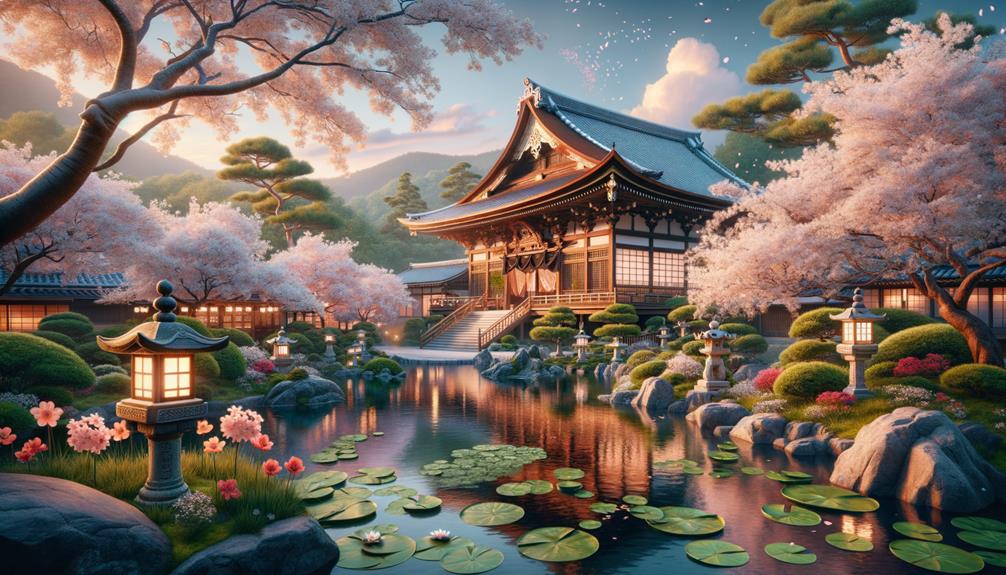I happened to be in Shizuoka on one of those rare, clear days that offers a perfect view of Mount Fuji. Walking along the Kumomi Coast, I couldn't help but be awestruck by the iconic peak standing tall against the blue sky, framed by lush pines and the sparkling Suruga Bay. This spot isn't just about the breathtaking scenery; it's also about the deep cultural connection the locals have with the mountain. Their stories and traditions add a rich layer of meaning to every view. But there was one particular spot that truly left a lasting impression on me…
How to Get There
Planning a trip from Tokyo to Shizuoka to see Mount Fuji? The JR Tokaido Shinkansen is your best bet. On my journey, I took the Hikari train, which got me to Shizuoka in about an hour. If you have a bit more time, the Kodama Shinkansen takes around 90 minutes and offers great views of Mount Fuji, especially near Odawara Station.
With my JR Pass, I hopped on the train, ready for the adventure. The JR Pass is fantastic for unlimited Shinkansen travel, perfect for spontaneous trips. Normally, an unreserved seat costs about 5940 yen one way, but the JR Pass lets you travel without worrying about individual ticket prices.
As the train smoothly made its way, the sight of Mount Fuji was awe-inspiring. Getting to Shizuoka quickly means more time to enjoy Japan's tallest peak, and the Shinkansen makes the trip memorable.
Best Viewing Times
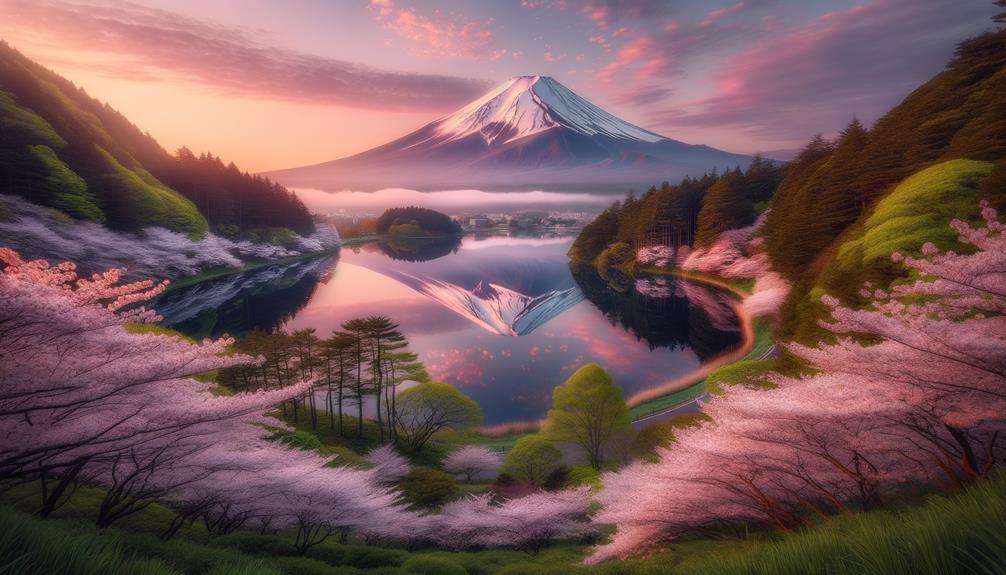
When I got to Shizuoka, I quickly found out that the best times to see Mount Fuji in all its glory are during the winter months, especially December and January. These cooler months bring clear skies and perfect visibility. The air is drier, and the mountain often wears a beautiful snow cap, creating a stunning scene.
From November to February, your chances of catching a clear view of Mount Fuji are much higher. The skies are often clear, showcasing the mountain against a bright blue backdrop. On the other hand, from April to August, the view is usually obscured by clouds and haze, making sightings rare. September is particularly tough because of typhoon season, which drastically cuts down visibility.
As I explored Shizuoka Prefecture, I noticed how much the locals appreciate these winter months. They know that the best views come during this time when nature is at its finest. Looking at Mount Fuji during winter felt like a special moment shared between the mountain and the viewer. The crisp air, clear skies, and breathtaking views made for a truly memorable experience.
Tanuki Lake
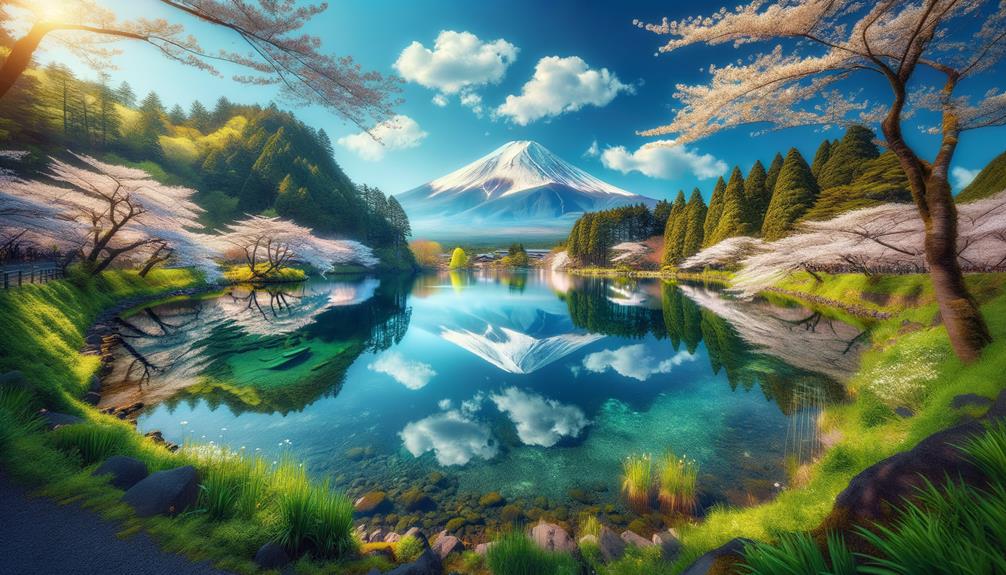
In the heart of Asagiri Kogen, Tanuki Lake offers a peaceful and enchanting view of Mount Fuji, perfectly reflected on its calm waters. As I arrive, the serene atmosphere immediately envelops me, and the fresh air is invigorating. Here, time feels like it slows down, letting nature's beauty shine.
Surrounding Tanuki Lake, beautiful tea fields stretch out, adding a lush green touch to the area. These fields represent Japan's rich cultural heritage and farming skills. As I wander through the tranquil landscape, I feel deeply connected to the land and its traditions.
The lake is a paradise for photographers, all eager to capture that ideal shot of Mount Fuji mirrored in the water. In the early morning and late evening, the light changes the scene, casting a magical glow over the mountain and lake. The reflection is so clear, it feels like there are two Fujis, one in the sky and one in the water.
Every visit to Tanuki Lake reminds me of the simple yet profound beauty that nature offers.
Miho No Matsubara
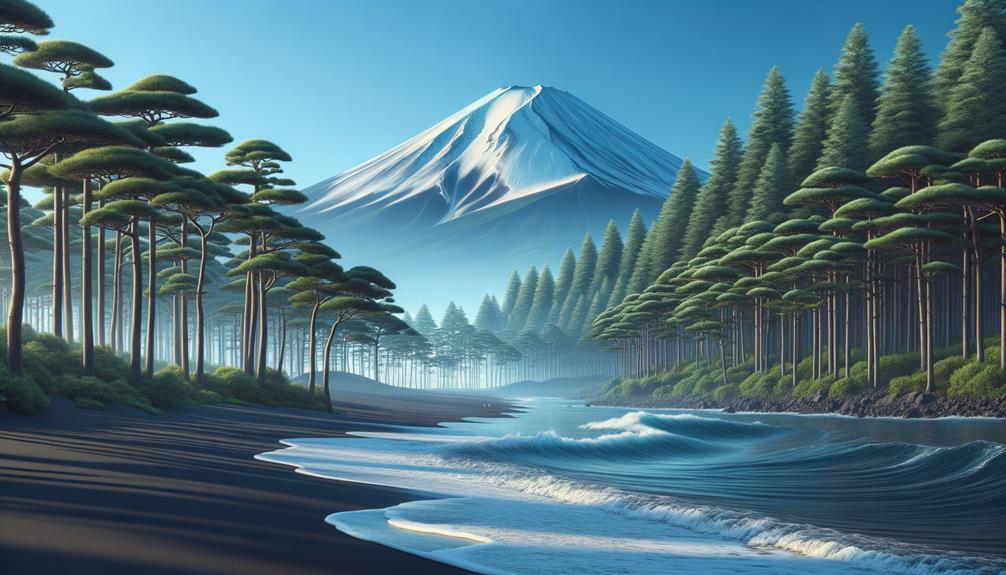
As I stroll through Miho No Matsubara, the thick canopy of ancient pine trees immediately catches my eye, framing the horizon beautifully. This grove is more than just a natural marvel; it's a historical landmark that deepens the cultural significance of the breathtaking view of Mt. Fuji. Every step along the peaceful beach feels like a journey through history, with the majestic mountain standing as a timeless guardian.
Scenic Pine Groves
Standing amidst the ancient pine groves of Miho No Matsubara, I can't help but be captivated by the serene beauty that perfectly frames the majestic Mt. Fuji. The thousands of pine trees here in Shizuoka City create a natural masterpiece, each one adding to the panoramic views of Japan's iconic mountain. As part of the Mt. Fuji World Cultural Heritage Site, this area offers a unique perspective that is both awe-inspiring and tranquil.
The pine trees seem to whisper tales of old, their roots intertwined with the very essence of Japanese culture and natural beauty. Legend has it that a goddess once spread these trees along the coast to console a banished fisherman, and standing here, I can almost feel the spiritual presence that permeates the air.
Walking through the grove, I'm struck by the contrast between the lush greenery of the pines and the snow-capped peak of Mt. Fuji in the distance. It's a place where one can truly experience the harmony of nature. The serene atmosphere invites you to pause, reflect, and appreciate the simple yet profound beauty of the world around you. This is freedom in its purest form.
Historic Significance
As I walk through Miho no Matsubara, the historical significance of this World Heritage Site becomes clear, with each pine tree reflecting Japan's rich history. Just a short trip from Shizuoka Station, this coastal pine grove has been a source of inspiration for poets and artists for centuries. The trees here, known for never shedding their needles, represent longevity and resilience—a living testament to Japan's past.
Strolling among these ancient pines, I feel a deep connection to history. The Japan National Tourism Organization highlights Miho no Matsubara as a key part of the Fuji World Heritage site, and it's easy to understand why. The view of Mount Fuji across Suruga Bay is both stunning and humbling.
- Timeless pine trees
- Breathtaking views of Mount Fuji
- Peaceful coastal setting
As I wander through the grove, I think about the countless visitors who have marveled at this place. Nearby, the longest pedestrian suspension bridge and various hot spring resorts offer modern-day explorers a mix of history and relaxation. Miho no Matsubara isn't just a scenic spot; it's a living piece of Japan's cultural heritage.
Suruga Bay Ferry
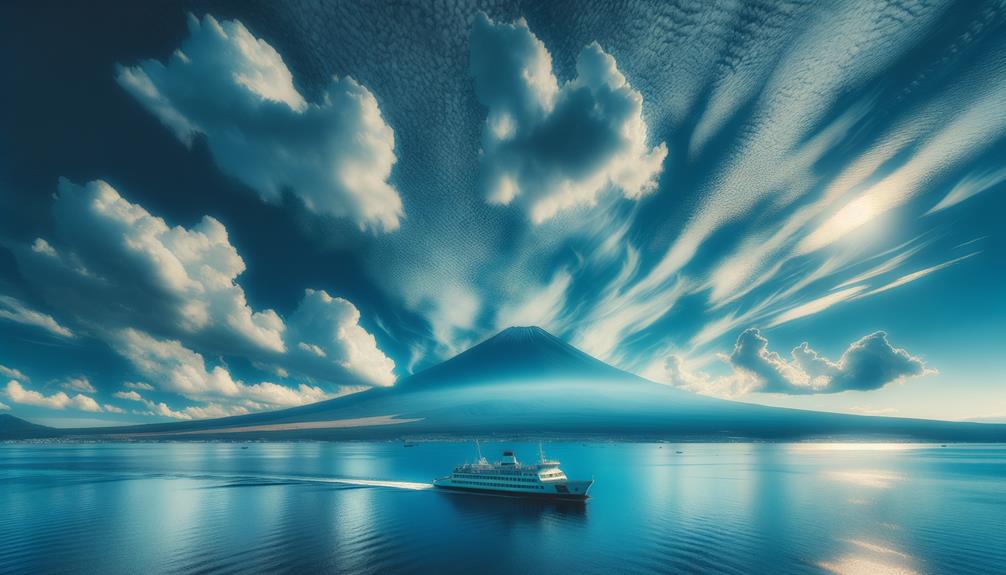
Riding the Suruga Bay Ferry, I was captivated by the stunning panoramic views of Mount Fuji rising from the sea. The ferry trip offers a peaceful break, providing a unique view of Japan's tallest mountain from the water. The crisp sea breeze and gentle rocking of the boat left me feeling refreshed and far removed from everyday stresses.
As we glided across Suruga Bay, the coastal scenery unfolded like a living postcard. The deep blue ocean contrasting with the lush green coastline was simply breathtaking. Mount Fuji stood tall, its snow-capped peak glistening in the sunlight.
| Feature | Description | Experience |
|---|---|---|
| Panoramic Views | 360-degree mountain view | Breathtaking |
| Coastal Landscapes | Rugged, picturesque | Tranquil |
| Maritime Setting | Open sea, fresh air | Invigorating |
Every moment on the ferry highlighted nature's grandeur. The sense of peace and wonder I experienced was unmatched. This ferry ride isn't just a trip across water; it's a journey into the heart of Japan's natural beauty. If you seek freedom and a fresh perspective, the Suruga Bay Ferry is an experience you shouldn't miss.
Obuchi Sasaba
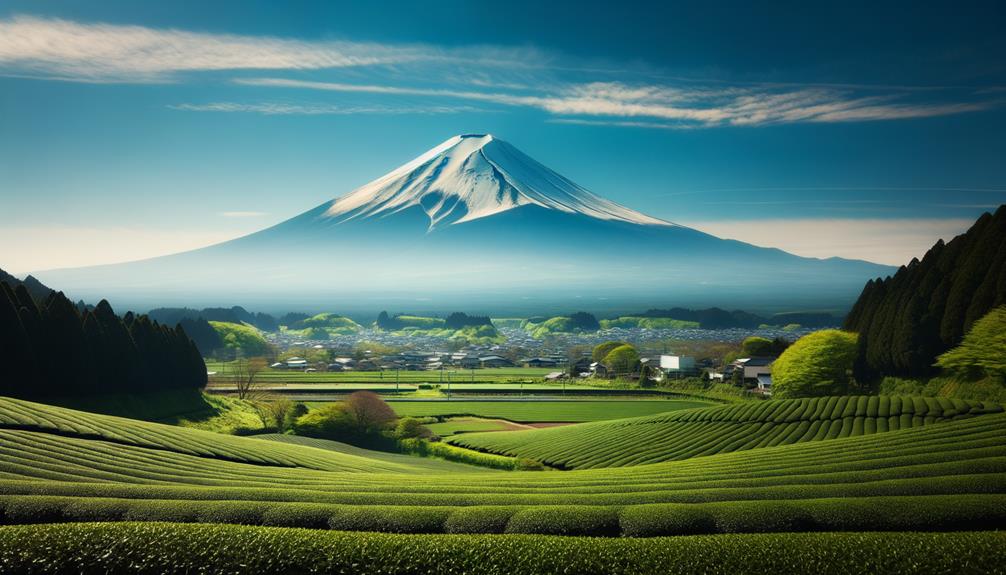
In the heart of Shimada City, Obuchi Sasaba serves as a peaceful retreat with its lush tea fields framing a stunning view of Mount Fuji. Walking through the vibrant green rows, I felt an overwhelming sense of calm. The contrast between the neatly arranged tea fields and the majestic, snow-capped peak of Mount Fuji was simply mesmerizing.
Here's what caught my eye:
- Rolling tea fields: Stretching endlessly, the well-kept tea bushes reflect Shizuoka's rich farming traditions.
- Mount Fuji's silhouette: The iconic mountain stands tall in the background, both humbling and awe-inspiring.
- Quiet and tranquility: The only sounds were rustling leaves and occasional bird chirps, making it an ideal spot for reflection.
Obuchi Sasaba isn't just a beautiful viewpoint; it's a haven for photographers and nature lovers eager to capture a classic Japanese landscape. The mix of natural beauty and cultural importance here is evident, offering a unique glimpse of Shizuoka. It's a place where time feels like it slows down, inviting you to enjoy every moment.
Kumomi Coast
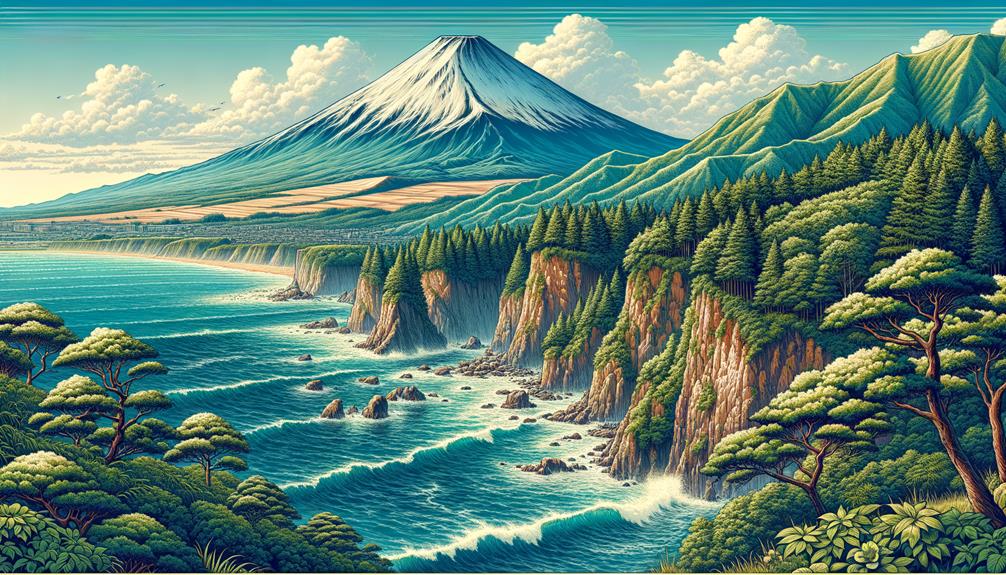
Standing on the rugged Kumomi Coast, I was struck by the stunning view of Mount Fuji rising above the tranquil Suruga Bay. The sight of Japan's famous mountain against the deep blue of the Pacific Ocean was truly captivating. Located in Shizuoka Prefecture, the Kumomi Coast is celebrated for its natural beauty, attracting photographers and travelers from far and wide.
Walking along the shoreline, the pine trees added a lovely touch to the already breathtaking scenery. The air carried the fresh scent of the sea, and the sound of waves crashing against the rocks was incredibly calming. The peaceful atmosphere at Kumomi Coast made it feel like a world apart from the busy pace of city life.
The sunsets here were especially beautiful, casting a warm glow over Suruga Bay and lighting up the sky in shades of orange and pink. Watching the sun set behind Mount Fuji was a sight to remember, blending natural beauty with a sense of tranquility. Kumomi Coast offers a unique and memorable view of Shizuoka Prefecture's rugged charm.
Frequently Asked Questions
Can You See Mt. Fuji From Shizuoka?
Absolutely, you can see Mt. Fuji from Shizuoka. I still recall standing at Miho-no-Matsubara, feeling the ocean breeze, and seeing the stunning outline of Mt. Fuji against the horizon. It's an experience that truly takes your breath away.
Which Town Has the Best View of Mount Fuji?
If you're looking for a spot to truly appreciate Mount Fuji, head to Nihondaira Yume Terrace in Shimizu City. The views from here are stunning, showcasing not just the mountain but also the breathtaking beauty and deep cultural heritage of Japan.
What Famous Street Has Mt. Fuji View?
If you're looking for a spot with an amazing view of Mt. Fuji, Miho-no-Matsubara is the place to be. Walking along its sandy beach, surrounded by iconic pine trees, I felt a deep connection to Japan's rich cultural history and stunning natural landscapes.
Is Mt. Fuji in Shizuoka or Yamanashi?
Ah, the classic debate: is Mt. Fuji in Shizuoka or Yamanashi? Honestly, you can see it from both spots. The summit is actually in Shizuoka, but Yamanashi gives you those iconic postcard views. It's a breathtaking sight no matter where you look from.



